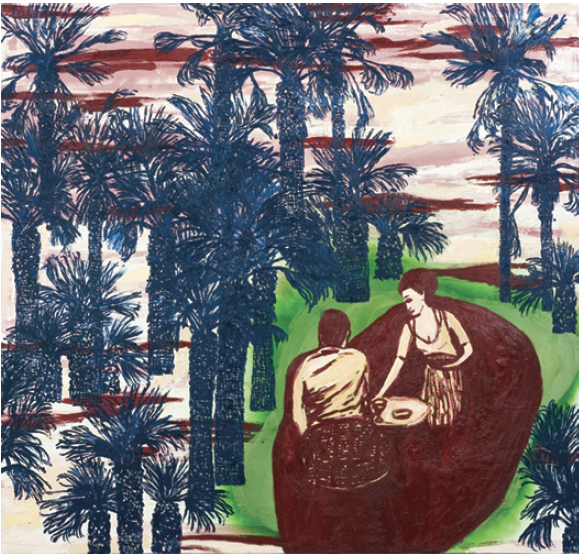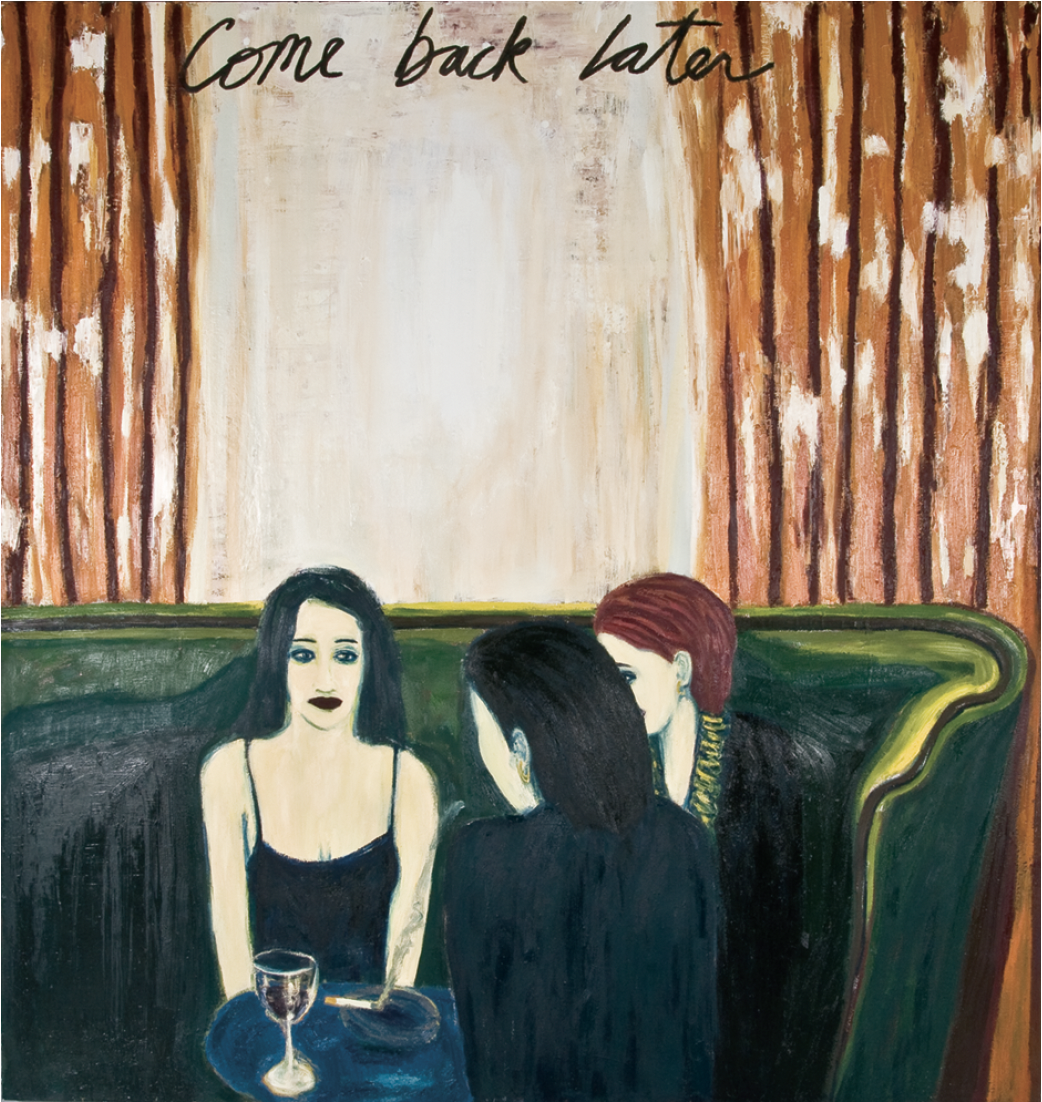Gary Pearson
The next time you are out for a drink with a friend, take a closer look at that man alone at the end of the bar, squinting through his cigarette smoke as he nonchalantly surveys the room. It could be artist Gary Pearson gathering material for his next painting, and you might be its subject. Beginning in 1997, Kelowna-based Pearson has explored the motif of either a lone person, or a duo, sitting in a café or bar, drinking or being served drinks. The denizens of cafes have become a common enough subject in art since Edgar Degas painted The Absinthe Drinker in 1876. In his own rather dispassionate treatment of this motif, Pearson takes on a role similar to that of the flâneur, whose gaze, like Pearson’s, is detached. In contrast to that of the voyeur, the scanning vision of the flâneur is unfocussed and unengaged, democratic; it is looking from a position of remove. As well, a feeling of isolation and detachment is seen in Pearson’s figures, which are always isolated physically from one another and from their surrounds. The sitters are not shown speaking, just mutely gazing, their thick, dark lips closed. Bits of text are often tossed in helter-skelter, the way that snippets of song lyrics might be heard through the open window of a passing car.

Gary Pearson, Under the Blue Palms, 2005, oil, oil enamel, enamel spray paint on canvas, 193 x 204 cm. Photo: Yuri Akuney.
The majority of the images Pearson works with have been drawn from his travels, both in the USA and abroad, not from his own environment in Kelowna. (In fact, the first work he has ever done based on a local subject is in this exhibition, The Bay Leaf Tree, from 2007, in which a shaft of ethereal light onto Lake Okanagan is improbably rendered in Pearson’s hallmark impasto.) It is easy to imagine why recollections from trips away would be powerful for an artist; some of our most intensely felt experiences are from our travels, later reprocessed through memory. It is these heightened moments that Pearson draws on for his work, filling sketchbooks with notations of things first glimpsed. He also shoots images with his digital camera from bus windows, for example, and may become mesmerized with something as mundane as an odd patch of light on the bare wall of his hotel room, as in his painting Single Bed/Room, from 2007.
Pearson’s natural sensibility runs to the dark side—he likes his film noir and his music blue. Growing up in British Columbia, he recalls seeing a great deal of darkly expressionistic work by Canadian artist Maxwell Bates. In art school at the University of Victoria, his artistic influences were northern expressionists Max Beckmann and Edvard Munch. Not surprisingly then, the mood in Pearson’s work has been consistently dark for decades. Contributing to this is his tar-like, thick paint, and his downright dank colours—no one could describe his work as lyrical. His compositions seem deliberately awkward, haphazard, the personages rough hewn. Still, this overall darkness has no sense of dreariness or despondency; it’s a delightful kind of darkness that the artist doesn’t want us to take too seriously.

Gary Pearson, Come Back Later, 2007, oil on canvas, 204 x 193 cm. Photo: Victor Hamm.
A recurring element that Pearson introduced to his work, beginning in 2004, is palm trees that don’t function as signifiers of the exotic, as we might initially imagine. In his hands they are tawdry things, sometimes used only as lively wallpaper, standing in for a landscape of elsewhere, or like token, parched examples at a gas station rather than those growing on a tropical island. Like his figures, they too seem disposessed and dislocated.
As part of his Kamloops installation, a twin set of videos bookend Pearson’s groupings of paintings and works on paper. Titled Soliloquy 1 and 2 (from 2006 and 2008, respectively), they are on loops and portray a lone woman in 1, and a man in 2, both of whom do nothing but look ahead with dead pan expressions drinking and smoking a cigar before the camera. These are eerily close to the figures in Pearson’s painted works; in fact, they read as his paintings come to life, with the same flatness in treatment, and stagey sense of being observed— and recorded—by the flâneur, who is Pearson himself.
Pearson’s works are not depictions of specific lived moments in the sitters’ lives—he doesn’t know these people, he is only passing through town. Like subjects in the lyrics of a blues song, the figures create a mood and are not intended to be deeply known or explored. ■
Gary Pearson’s “The End is My Beginning” was exhibited at Kamloops Art Gallery from March 30 to May 25, 2008.
Liz Wylie is curator of the Kelowna Art Gallery.

